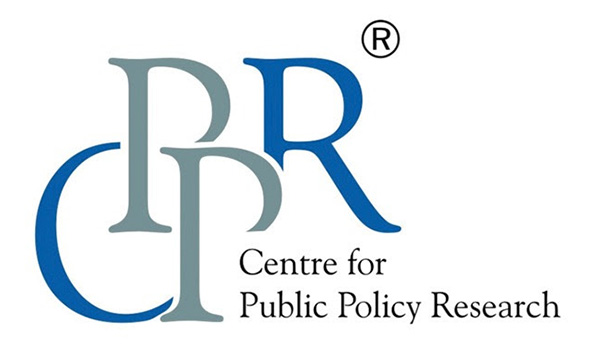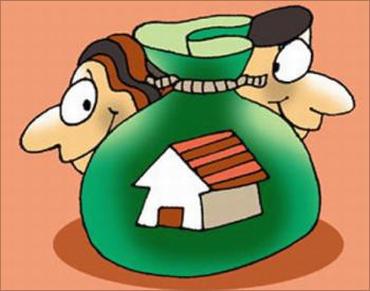Articles

Private universities: A healing agent to the forever sickest kid of the Government, ‘the Higher Education Sector’
October 10, 2015
Towards a path of achievable INDCs
October 10, 2015Will the Indian real estate market bubble burst?
The real estate prices in Indian Metros have soared in several cities in India; some cities have witnessed a ten-fold increase in property prices over the past decade. The period of great moderation in the western world combined with double-digit growth in China aided by investment in infrastructure and manufacturing meant that global growth was well above trend. India, despite all its policy ills continually, grew at over 7% YoY in the past decade. Favorable demographics and a rapidly growing middle class, nurtured by India’s flourishing service sector, aided India’s growth. Median incomes rose and substantial wealth was created; as a consequence property prices rose. The NHB Residex Index recorded property price increase in cities such as Chennai, Mumbai and Delhi of over 200% since 2007. Price growth in second – tier cities such as Gurgaon and Pune were not far behind. Conversely, the situation took a turn for the worse since early 2014. As Isaac Newton once said “What goes up, must come down!”
Since then, the real estate market has been among the sectors worst hit in the past couple of years. A combination of stubbornly high mortgage interest rates in the face of high inflation and exorbitant prices kept circumspect home buyers away.Also, poor government policies, persistent delays in securing mandatory government approvals and drying up of credit have exacerbated the situation. As a result, real estate transaction volumes have dried up – home builders continue to hold large amounts of inventory and have struggled with slow sales and stalled projects. For instance, according to a report by Knight Frank India, in the Jan-Jun’15 period, the Mumbai metropolitan region recorded its worst home sales and project launches since the global financial crisis of 2008. Home sales had dipped 9% to 28,446 units and new launches dropped 47% to 18,887 units.
On the other hand, home buyers have been unwilling to pay premium property prices for fear of an impending crash in the housing bubble. To understand the extent of this struggling sector, one would only have to take a look at equity prices of leading home builders – these equity prices have continued to languish at multi-year lows whilst the broad market has trended higher.
The other often-overlooked phenomenon in the real estate market is the rental yield aka incentive of a person to buy or rent a property. The monthly installment for a Rs.2 Cr mortgage at an exorbitant interest rate of 10.5% would require the debtor to make a payment to the tune of Rs.1.5 lakhs per month over a 30-year period. However, the same property would rent for a paltry Rs.40-50,000 based on anecdotal evidence from major property websites such as 99 acres and magic brick. In essence, while a client pays 10.5% on his mortgage, his return on investment via rent is less than 3% of the property value. The 7% difference in yield between the mortgage rate and rental yield is enough evidence of the flagrant problems confounding the property market. Prices are indeed severely dislocated.
Dr. Raghuram Rajan in a thinly veiled threat suggested that property builders ought to drop prices, for the market to clear. Drop in prices would attract more buyers thereby by increasing demand. However, few have heeded the central bankers advice and business volumes have continued to deteriorate, according to magic brick surveys.
However, recently, a silver lining has emerged. The continued decline in global commodity prices has meant that the wholesale price Index (WPI) inflation remained in the negative territory for the 10th consecutive month at 4.95 percent, while the more crucial consumer price index (CPI) inflation also continued to decline, logging 3.66 percent compared to over 5% a year ago. This has allowed the RBI Governor to cut rates by 50bps taking the market by surprise. Will this allow property prices to stabilize somewhat remains to be seen but for a structural recovery, prices will have to come down a lot more from these levels.
We advice the Reserve Bank of India to keep the benchmark interest rate’s on hold for an extended period of time to ensure that there is no bubble in the housing market. This will force some builders undergoing a cash crunch to lower prices to keep inventory moving and to increase their liquidity profile.
* Author is Managing Associate, Centre for Comparative Studies (CCS). Views are personal
Pooja Sundaresh was Managing Associate of the CPPR Centre for Comparative Studies.



2 Comments
Interesting article and a nice read. Could you give a minor clarification.
Would you be having data on the % difference in yield between the mortgage rate and rental yield during the period 2007-2013? I presume from your article that rentals was much higher earlier (after 2007) owing to high housing inflation. As a result, real estate sector was profitable and had a tremendous growth post-2007.
But towards the end of the article, you mentioned that the current low inflation rate is a silver lining for the real estate sector. Is it so? Isn’t high inflation a requisite for ensuring higher returns to property owners? Wasn’t low inflation a main reason for decline in growth of real estate sector? If so, can we expect the real estate sector to pick up unless inflation rate also increases? I read somewhere that low interest rate and high inflation rate is necessary for real estate sector to grow.
Or, did you mean that by decreasing the interest rate, RBI is trying to push up inflation rate.
I think the bubble is already started in rural areas in India, where the buyers cant able to sell the lands at that price, as nobody is ready to buy due to high inflated prices. In tamilnadu, after the registartion land rates are high, the realestate sector collapsed in rural areas where on acre of land of INR 10,000 in 1990, sold at a rate of 10 lakhs in 2000 to 2008 and then people shifted to buy gold. Once these lands were of agriculture, but now they turned to plots and looks deserted land.